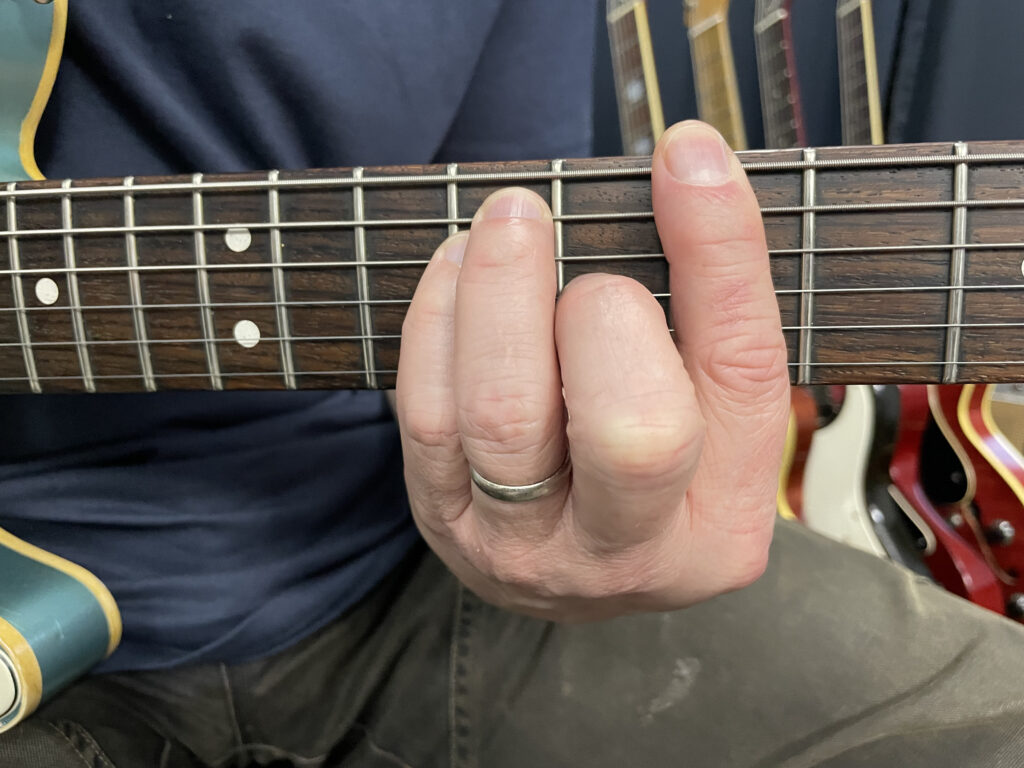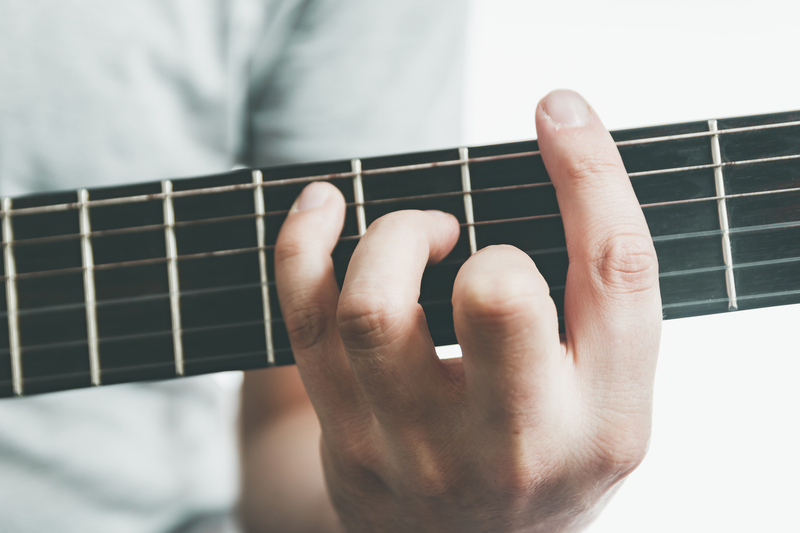Are you tired of feeling like a clumsy contortionist every time you try to play a barre chord on the guitar? Are your fingers more twisted than a pretzel and your frustration level reaching new heights? Fear not, my friends, for we are here to unveil the key strategies for mastering those elusive barre chords and reclaiming your sanity. So grab your guitar and get ready to rock (or at least not sound like a dying cat) as we delve into the world of barre chord mastery!
Contents
- 1 Understanding the Fundamentals of Barre Chords
- 2 The Role of Hand Strength and Conditioning
- 3 Optimizing Finger Placement for Clearer Sound
- 4 Transitioning Smoothly Between Chords
- 5 Overcoming Common Challenges with Barre Chords
- 6 Practicing Mindfully for Consistent Improvement
- 7 Leveraging Advanced Techniques for Barre Chord Mastery
- 8 FAQs
- 9 In conclusion, remember that mastering barre chords is like mastering the art of cooking - it takes time, patience, and a few burnt fingers along the way. But with the right ingredients, a dash of determination, and a sprinkle of humor, you’ll be strumming those chords like a pro in no time. So keep practicing, keep pushing through the frustration, and soon enough, you’ll be the envy of every guitarist in town. Now go forth and conquer those barre chords!
Understanding the Fundamentals of Barre Chords
So, you’ve decided to tackle the tricky world of barre chords? Well, buckle up because it’s going to be a wild ride! But fear not, with a little understanding of the fundamentals, you’ll be shredding on the guitar in no time.
First things first, let’s talk about what exactly a barre chord is. Basically, it’s when you use one finger to press down multiple strings on the guitar neck. Sounds easy, right? Wrong! Barre chords are the bane of many guitarists’ existence, but with practice and patience, you can conquer them.
One key element to mastering barre chords is hand strength. You’ll need fingers of steel to press down those strings with enough force to make them ring out clearly. So, hit the gym, do some finger push-ups, or maybe invest in a finger weight set. Whatever it takes to beef up those digits!
Another important aspect of barre chords is proper finger placement. Make sure your index finger is pressing down on the strings with just the right amount of pressure. Too little and it won’t ring out, too much and you’ll sound like a dying cat. Practice finding that sweet spot until you can hit it consistently. And remember, practice makes perfect, even if it means enduring some ear-splitting screeches along the way.
The Role of Hand Strength and Conditioning
So you think hand strength and conditioning is just for crushin’ cans and showin’ off your handshake at parties? Think again, my friend! Your hands are the unsung heroes of your body, responsible for everything from opening jars to typing up those TPS reports. It’s time we give them the love and attention they deserve!
Imagine a world where you can finally open that stubborn pickle jar without having to call in backup. All it takes is a little bit of hand strengthening exercises to turn those weak, noodle-like appendages into powerful tools of destruction (or, you know, just really good at grip strength).
Don’t underestimate the power of a strong grip, my friends. With great hand strength comes great responsibility… and the ability to finally beat your buddy at arm wrestling. So next time you hit the gym, don’t forget about those hands! Incorporate some finger curls, wrist curls, and grip training into your routine, and watch as your hand strength levels up faster than you can say “I double dare you to arm wrestle me!”
Optimizing Finger Placement for Clearer Sound
When it comes to playing music, the key to a clearer sound lies in your finger placement. Remember, you’re not just tickling the keys or strumming the strings – you’re coaxing out beautiful melodies with your fingertips. So, let’s dive into some tips and tricks to optimize your finger placement for a pristine sound.
First things first, make sure your fingers are relaxed and in the right position. If you’re tensing up or contorting your hand into strange shapes, you’re not going to get the crystal-clear sound you’re aiming for. Keep your fingers curved and light, like you’re gently cradling a delicate baby bird. Trust me, no baby birds will be harmed in the making of your music.
Next, let’s talk about the magic of finger independence. Each finger has a unique job to do, so don’t let them slouch on the job. Keep your pinky at the ready for those high notes, your ring finger for the mid-range, your middle finger for the transitions, and your index finger for the low end. It’s like a finger orchestra, with each member playing their part to perfection.
Lastly, practice, practice, practice! Rome wasn’t built in a day, and neither is a flawless sound. Take the time to experiment with different finger placements, try out new techniques, and don’t be afraid to make mistakes. After all, the journey to a clearer sound is half the fun – and the other half is wowing your audience with your newfound finger finesse.

Transitioning Smoothly Between Chords
So you’ve mastered playing individual chords like a pro, but now it’s time to level up and smoothly transition between them like a smooth criminal. Don’t worry, I’ve got some tips that will have you gliding from chord to chord in no time!
First off, make sure your fingers are positioned correctly on each chord. Nothing kills a smooth transition faster than fumbling around trying to find the right notes. Practice getting your fingers into position quickly and efficiently so you can switch between chords with ease.
Next, pay attention to your strumming hand. The key to smooth transitions is keeping a steady rhythm. Practice maintaining a consistent strumming pattern as you move from chord to chord. You’ll be amazed at how much smoother your transitions become when you have a steady beat to guide you.
Lastly, don’t be afraid to experiment with different fingerings and voicings for each chord. Sometimes a slight change in finger placement can make a big difference in how smoothly you can move between chords. Be bold and try out different variations until you find the ones that work best for you.

Overcoming Common Challenges with Barre Chords
Barre chords can be the bane of every guitarist’s existence. We’ve all been there – fingers contorted into bizarre shapes, straining to hold down multiple strings at once. But fear not, fellow musicians! With a little perseverance and a few handy tips, you too can conquer the dreaded barre chord.
One common challenge when it comes to barre chords is getting a clean, crisp sound. If you find that your chords are sounding muted or buzzy, try adjusting your finger placement. Make sure you’re using the bony part of your index finger to press down on the strings, rather than the fleshy pad. Remember, practice makes perfect – keep at it and eventually, you’ll start to hear that satisfying ring of a well-played chord.
Another hurdle to overcome with barre chords is the dreaded finger fatigue. It’s not uncommon for your hand to start cramping up after a marathon session of barre chord practice. To combat this, try doing some finger exercises before you pick up your guitar. Stretching and strengthening your fingers can help improve your endurance and make those barre chords a little easier to handle.
Remember, even the most seasoned guitarists struggled with barre chords at some point. Don’t get discouraged if it takes you some time to master them. Keep a positive attitude, stay patient, and before you know it, you’ll be playing those tricky chords with confidence and flair. So go ahead, grab your guitar and tackle those barre chords head-on!
Practicing Mindfully for Consistent Improvement
Are you tired of trying to improve yourself only to end up feeling frustrated with slow progress and lack of consistency? Well, fear not, my friends, because I have a solution for you - !
It may sound like a fancy buzzword, but trust me, it’s as simple as taking a few moments each day to focus on what you’re doing and how you’re doing it. By being present in the moment and paying attention to your actions, you’ll be amazed at how much more effective your efforts become.
So, how exactly do you practice mindfully for consistent improvement? Let me break it down for you in a few easy steps:
- Set specific goals for what you want to improve.
- Focus on one goal at a time to avoid feeling overwhelmed.
- Take breaks and recharge when needed to prevent burnout.
Remember, Rome wasn’t built in a day, so be patient with yourself as you work towards consistent improvement. With a little mindfulness and a whole lot of determination, you’ll be well on your way to reaching your goals in no time!
Leveraging Advanced Techniques for Barre Chord Mastery
So, you’ve finally decided to tackle those pesky barre chords, huh? Well, get ready to feel like a guitar god because we’re about to blow your mind with some advanced techniques that will have you mastering those dreaded finger contortion exercises in no time.
First things first, let’s talk about finger placement. We all know that barre chords require some serious finger strength, but did you know that the secret to mastering them lies in the angle of your index finger? That’s right, folks. By slightly rotating your finger to the side, you can increase the surface area in contact with the fretboard, making it easier to press down all those strings.
Next up, let’s chat about hand positioning. Instead of trying to muscle through those chords with brute force, try relaxing your wrist and allowing your hand to form a more natural curve. This will not only reduce strain on your muscles but also help you transition between chords more smoothly.
And finally, don’t forget to use your thumb to your advantage. By positioning it lower on the neck of the guitar, you can create additional support for your fingers, making it easier to apply the necessary pressure for those sweet, sweet barre chords. So, go ahead, give these techniques a try and watch as your barre chord mastery reaches new heights!
FAQs
Why are barre chords so frustrating to master?
Well, my friend, barre chords are like the Rubik’s cube of the guitar world. They require precise finger placement, strong hand muscles, and lots of patience. It’s like trying to juggle flaming swords while balancing on a tightrope – challenging, but oh so satisfying when you finally get it right.
What are some key strategies for tackling barre chords?
First off, make sure your guitar is properly set up. A wonky neck or high action can make barre chords feel like trying to grip a greased pig. Next, work on building up those finger muscles with exercises like finger pushups and squeezing stress balls. And most importantly, practice, practice, practice. Rome wasn’t built in a day, and neither is a killer barre chord.
How can I stay motivated when I feel like throwing my guitar out the window?
Trust me, we’ve all been there. The trick is to break down the chord into smaller chunks and tackle them one at a time. Celebrate small victories, like playing a clean A major barre chord without wanting to cry. And remember, even the greats like Jimi Hendrix and Eric Clapton struggled with barre chords at one point. If they can do it, so can you.
Are there any shortcuts for mastering barre chords?
Shortcuts, you say? Well, I’m not here to sell you snake oil, but some players find it helpful to use a lighter gauge of strings or a capo to ease the pressure on their fingers while they build up strength. And hey, if all else fails, you can always hire a guitar wizard to cast a spell on your fingers so you can play barre chords like a pro. Just kidding…kind of.



